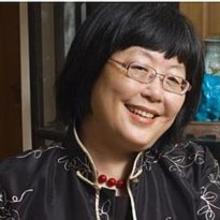
An exceptional environment, she was born in 1946 in Shanghai, in a well-known family of bankers. After 1949, the family spent a few years in Hong Kong and then returned to Shanghai. She studied in English and Chinese and finished high school in 1964, too old to be sent “to the countryside”. A year in English at a teacher’s training school; she taught until 1979, when she published a short story and then in 1982 a collection “Death of a Swan” and three years later became a member of the Writer’s Union.
Essential elements: she speaks and can write in English, she has travelled outside China. She often lived in Hong Kong even if she felt uncomfortable there. Her family environment brought her a lot, although it was the source of serious problems during the Cultural Revolution. Her books do not speak of peasantry or land reform, but of the bourgeoisie and the employees of the cities, of Shanghai.
A love for Shanghai:
The city is an important figure both in her 70 novels and short stories and in the six books devoted to Shanghai written since 2002 in order to prevent this culture from disappearing. As with Eileen Chang, the decor is important, we are told about clothes, fashion, hairdressing, jewellery… The Shanghai style can be found in all her texts.
It was also during the Cultural Revolution in Shanghai that she devoted a lot of effort to translate Nien Cheng’s book “Life and Death in Shanghai” (12) into Chinese; one of the basic documents on this period. Nien Cheng, who was married to the President of Shell in Shanghai, was imprisoned from 1966 to 1973 and was finally able to emigrate to the United States.
Christian since 1979:
It is important for her: “because I am a Christian, I also observe my surroundings from a different angle. Whenever I pick up my pen, I feel that there is a dove soaring in my heart”. But she separates religion and writing: “I don’t want to put religious terms in my story just because I am a Christian…A Christian shows his religion by his behaviour and worldview, not by words from the Bible”(11).
Religion makes her optimistic despite the very troubled times she has been through. In one of her best short stories “In my heart there is room for three” (9), she tells us about the loving evolution of a 33-year-old biology technician whom her mother wants to marry to a much older widower; she is attracted to religion and meets in church a man who draws and who, despite his crutches, is an artist who will make a portrait of herself without telling her; an optimist “It’s not enough merely to hope for something, you’ve got to work for it”.
A family of the upper bourgeoisie:

She considers that this social class was very unfairly treated even when it accepted the communist revolution and wanted to participate in the building of the new China. “I have the duty to speak up for people with my background.” (11)
In 1989, she published “The Banker” (1), a long novel that she wrote after three months in Hong Kong with her grandfather, the book model. An interesting book on Shanghai during the Japanese period, from 1937 to 1945, which depicts the life of the President of Cathay Republic Bank, his family, his relationships and his difficulties with competitors who seek to damage the bank’s image. The Japanese occupation changed the situation; he remained in office without much power but protected his employees and maintained links with the Resistance.
After the war, the corrupt delegates of the Nationalists created other problems for him, but he was supported by his staff. “Corruption and decay among the Nationalists have already reached an extreme and it will be the Communists who actually unite the nation and serve the people” (p.458).
The history of the period is not at the heart of the novel; the episodes are briefly mentioned but what really interests the novelist is the life of this large family, the intrigues, the loves, the turpitudes. The wealth and lifestyle that one strive to preserve are the most important.
Few developments; a very slow tempo, but the external narrator does not play a moralizing role (unlike other texts) however he does not convince us when he only details the distinguished qualities of this president.
The bourgeoisie and the Revolution:
It has often been forgotten that in the early years the communists sought to attract overseas Chinese and to reconcile capitalists and business leaders: an annual interest on the value of nationalized assets was paid, allowing this Shanghai bourgeoisie to keep its way of life.
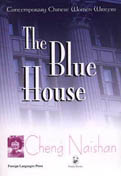
Later on, some of the seized property, particularly homes, will be returned to their owners. This is one of the themes of the 1981 short novel “The Blue House” (2) which was a success in China. The founder of the Gu family owes his fortune to the war that caused the price of the cast iron stocks he had bought to rise tremendously. He often develops his business in a dishonest manner and his divorce causes his wife’s suicide.
His second son, Gu Hongfei, refused to marry the wife chosen by his father, publicly broke off relations with the family, became a teacher and married a nurse. They are respected, happy and live modestly. The family home is returned to his half-brother who has never worked and has benefited from interest paid by the State. Gu Hongfei’s son dreams of living in the Blue House. This dream will make him neglect a young girl he was in love with; he doesn’t have the moral rigour of his parents… Money is key; “The Blue House was nothing more than a gorgeous tomb. Neither time, nor air, nor light entered it’s thick walls. »
A completely different tone than in “The Banker”; “national capitalists” are not always recommendable…, but we are not talking about politics or the Party; we are simply praising the social responsibility of the parents.
A short novel, “When a baby is born” (4) is a harsher criticism of Shanghai’s attitude. Tang Dawei has also broken up with a wealthy family that benefits from interest paid by the state. He lives in the Gobi desert near a mine where, as an engineer, he works with his wife. The social constraints and prohibitions made her mother and his life in Shanghai unhappy. The author contrasts the morals and generosity of those who work in the mines with the arrogance of the Shanghai people who only think about money and shirk their responsibilities.
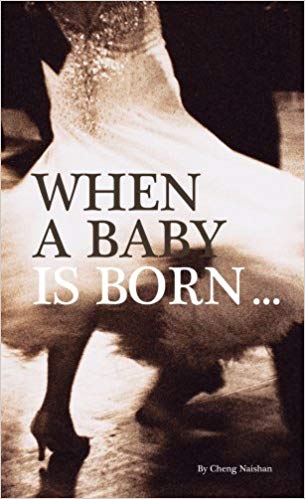
A disappointing text, an irritating self-righteousness, characters who are only sketches, which is not the case in the novels mentioned above. Moreover, there are few developments in the plot and the conclusion is quite weak.
The Communists and the Cultural Revolution:
Cheng Naishan, in several texts, underlines the positive aspects of communist action, whether in terms of educational development or measures taken to limit prostitution… She shows the weaknesses of the Nationalists’ struggle against the Japanese and analyses corruption in the Chungking administration.
In a beautiful short story, “Gong Chun’s teapot” (7), she highlights the impact of opium and the fight against drugs. Xiuzhen’s parents agreed to let her go to Shanghai as a servant. She becomes an important part of the He family, a trusted person who will be entrusted with a treasure, a Yixing teapot that changes colour when tea is brewed but creates misfortune around it.
Xiuzhen, back in her village, marries an older opium addict. The Party summoned him when he was in need. She will go back to Shanghai, well managed by the communists, where prices are stable. Her husband, the only landlord in the area, was eventually shot and the teapot lost.
Political problems are not directly addressed, but the novelist constantly evokes concern in all social classes, what will tomorrow look like?
The author tells us in several short stories about the dramas of the Cultural Revolution; her family was affected like millions of others. This event is mentioned as a kind of setting but is not treated with a sense of History as such as Mo Yan or Yan Lianke could do.
“The piano tuner” (3) is one of the best short stories. Little Chiu is the nephew of uncle Wen, the piano tuner, who resumed service after the Cultural Revolution and the return of their homes to large families. He remembers that his uncle had tuned Lucy Liu’s piano, a classmate. Her parents, following an action by the Red Guards, disappeared and Lucy was taken in by Wen. In love, Chiu made her a cardboard piano keyboard that will allow her to continue to practice.
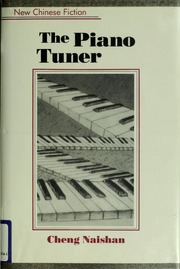
The parents are back, Lucy Liu gets married. Chiu will go back to tune the piano. Progress, he no longer comes in through the back door and dines in the kitchen. He can talk about music because he studied at the conservatory and it is Lucy’s husband who will give violin lessons to his son.
Sometimes the texts only speak of the past, of the pre-1966 period, as is the case with “The Plea” (10), a short story of lesser quality. He comes from a wealthy family, his fiancée rejected him when the family home was confiscated. He gives English lessons and marries one of his students who works after her studies in a nearby factory. He keeps thinking about his past as a wealthy young man. Situation changes fast because his parents are getting their homes back and a lot of money. Friends flocked but he moved away from his wife and they eventually split up.
The legacy of the Revolution:
Cheng Naishan knows the privileged very well but also the working classes because she has taught for many years in suburban schools. “The Poor Street” (8) is a short novel from 1989 that was quite successful despite some moralizing passages.
A young teacher from a privileged family teaches in a school in a poor neighbourhood an hour’s bus ride from home. She discovers poverty, cultural emptiness, the survival of social classes and archaic behaviours. She will adapt, helped by a colleague. In these neighbourhoods, the role of teachers is essential both for behavioural references and for openness to the world.
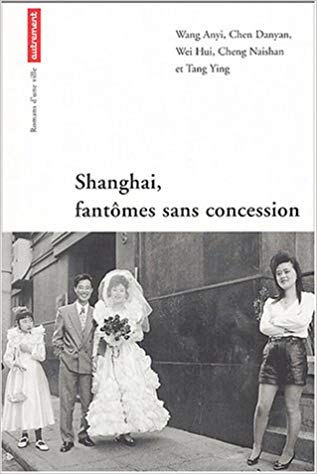
Social habits change only very slowly. In “Your name, my first name” (5), we are told in a pleasant and smiling way about the life of Mrs. Zhong, concubine and then mistress of famous businessmen. But when they died, they left her nothing: “For a smile from their beautiful mistress, they would spend a fortune-pure gesture of gallantry. But mentioning a cent to her on a will is another matter.”
During the Cultural Revolution, it was her servant Xiu Zhen who protected her, Mrs. Zhong adopted her. As she has a daughter and a grandson, it is her maid who gives her a family.
Before her death in 2013 from leukaemia, Cheng Naishan offers us a conclusion, a synthesis. “Happy Birthday” (6) is a short novel about Zhenzhen’s birthday. She is 45 years old, a husband Jize and a daughter Jiayin. Zhenzhen is well paid for her job in a joint venture. Jize did not want to go abroad when they had the opportunity and did not invest the funds that were returned to him in an optimal way.
Nothing really serious but like many Shanghai bourgeois, she would like to leave because the political developments, that were so dramatic, are unpredictable. What really worries her is the change of generation, only one thing matters, money. “People nowadays are not willing to contribute anything to society. What they want is money….I am worried about the future of China.” (11)
Bertrand Mialaret
(1) Cheng Naishan, ” The Banker “, translated par Britten Dean. China Books 1992, 460 pages.
(2) Cheng Naishan, “The Blue House”, Panda Books, 2005, 310 pages.
(3) Cheng Naishan, “The Piano Tuner”, translated par Britten Dean, China Books 1989, 176 pages. Title story, page 143-172.
(4) Cheng Naishan, “When a baby is born”, translated par Benjamin Chang, Better Link Press 2010, 170 pages.
(5) Cheng Naishan, “Ton Nom, mon Prénom “, Page 101 à 139, traduit par Marie Laureillard, in ” Shanghai, fantômes sans concession “, Editions Autrement 2004.
(6) Cheng Naishan, ” Happy Birthday ” page 109-196, in ” Contemporary Chinese Women Writers “. Panda Books, 19993.
(7) Cheng Naishan, “La théière caméléon”, page 77 à 151, traduit par Liu Hanyu in ” Œuvres Choisies des femmes écrivains chinoises “, Panda 1995. In English, ” Gong Chun’s Teapot “, translated par Li Guoqing in ” The Blue House “, Panda 2005, P. 243-302.
(8) Cheng Naishan, “The Poor street”, pages 128 -229, translated by Frances Mc Donald in “The Blue House”, Panda 2005.
(9) Cheng Naishan, ” In my heart there is room for three”, page 117-129, in ” The piano tuner”.
(10) Cheng Naishan, “The Plea”, p. 131-142, in “The Piano Tuner”.
(11) Laifong Leung, “Interviews with Chinese writers of the lost generation”, ME Sharpe 1994, 390 pages.
(12) Nien Cheng, “Life and death in Shanghai”, Grove Press 1986, 540 pages. (In french, “Vie et mort à Shanghai”, Albin Michel, 1987, 487 pages).





